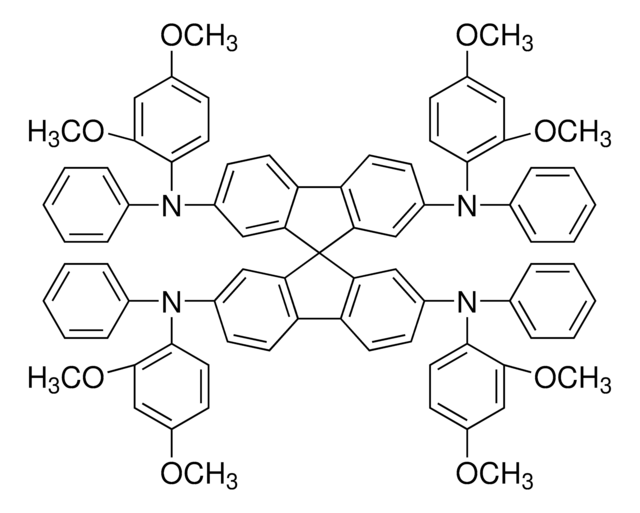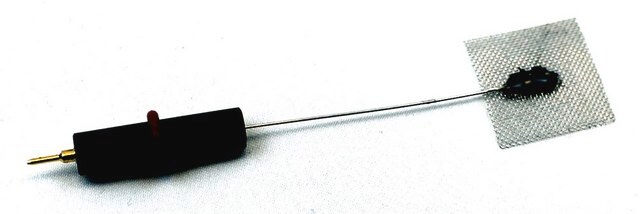推荐产品
描述
Crystal Structure: > 99% anatase (analysis carried out on starting material, prior to paste manufacture)
形狀
paste (white)
濃度
20.0 wt. % (+/- 1.2 wt%)
樣品平均尺寸
150-250 nm (scatter)
黏度
15000-25000 mPa.s (Analysis carried out with 20mm 4 degree cone/plate; 40 s-1)
InChI
1S/2O.Ti
InChI 密鑰
GWEVSGVZZGPLCZ-UHFFFAOYSA-N
一般說明
應用
Scattering Titania Paste contains highly dispersed anatase scattering particles (150nm to 250nm). This paste produces a non-active scattering layer when applied onto a pre-printed active layer.
After drying; this paste must be fired – together with the pre-printed active layers – at or above 500°C. This results in an opaque sintered layer; with a thickness of ~3μm for one printed layer; when using a 90T mesh screen.
Storage: Store in the dark at 20°C
法律資訊
Greatcell Solar® is a registered trademark of Greatcell Solar
訊號詞
Warning
危險聲明
危險分類
Eye Irrit. 2 - Skin Irrit. 2
儲存類別代碼
10 - Combustible liquids
水污染物質分類(WGK)
WGK 1
閃點(°F)
195.8 °F
閃點(°C)
91 °C
其他客户在看
商品
Few Monolayer Atomic Layer Deposition (ALD) on Surfaces and Interfaces for Energy Applications
Organic photovoltaics (OPVs) represent a low-cost, lightweight, and scalable alternative to conventional solar cells. While significant progress has been made in the development of conventional bulk heterojunction cells, new approaches are required to achieve the performance and stability necessary to enable commercially successful OPVs.
While dye sensitization as the basis for color photography has been accepted for a very long time,1 attempts to use this principle for the conversion of solar light to electricity generally had resulted only in very low photocurrents, below 100 nA/cm2.2
Professor Tokito and Professor Takeda share their new materials, device architecture design principles, and performance optimization protocols for printed and solution-processed, low-cost, highly flexible, organic electronic devices.
我们的科学家团队拥有各种研究领域经验,包括生命科学、材料科学、化学合成、色谱、分析及许多其他领域.
联系技术服务部门






![双吡嗪并[2,3-f:2′,3′-h]喹喔啉-2,3,6,7,10,11-己腈 95% (HPLC)](/deepweb/assets/sigmaaldrich/product/structures/151/558/c0e2c95f-5228-4864-a7a5-4b9765a19840/640/c0e2c95f-5228-4864-a7a5-4b9765a19840.png)


